On the train going into Liverpool recently, I got talking to a woman and her grandson. When the conversation turned to art, the woman became almost embarrassed, saying she knew nothing about art and wasn’t any good at it. But the nine-year-old boy immediately, confidently, reassured her, saying, “Grandma, it’s all just creativity and using your imagination”.
Was there ever a better definition of what art is? For me, it’s up there with that of the renowned art historian, E.H. Gombrich, who said: “There really is no such thing as art. There are only artists”.
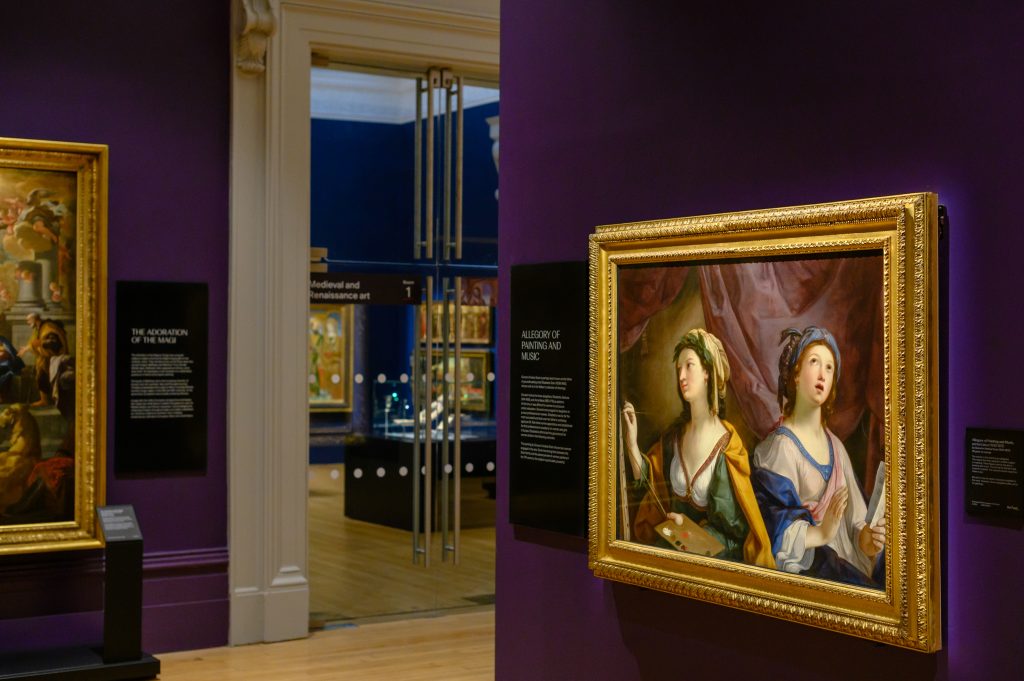
View of the Walker Art Gallery Rooms (Photo Credit: Pete Carr)
The boy’s words stayed with me as I made my way to the Walker Gallery to meet Curator of International Fine Art, Kate O’Donoghue. She was to be my guide through the Gallery’s rooms for Mediaeval, Renaissance and Baroque art, newly opened after a three-year closure for a total makeover. The 200 exhibits include rare and exceptional paintings, sculptures and decorative arts, such as glass, ceramics, jewellery and textiles, dating from the 12th to 18th century.
My tour begins in the Prints and Drawings Gallery, which is the first dedicated space the Gallery has had for works on paper. There are over 8,500 in the Walker’s collection, so there was plenty of choice for this new display. The room’s low lighting, specially constructed display cases and improved environmental controls are designed to protect the artworks and allow the Gallery to safely exhibit fragile pieces, as O’Donoghue explains: “They’re very sensitive to light, which means they can’t stay on permanent display, so we’re looking at changing the work every six months. But what’s nice about that is that it offers something new for repeat visitors. Most of these haven’t been shown before so it creates a wonderful opportunity that we’re really keen to build on as part of this project”.
One of the most striking drawings in this room is a Self Portrait (c.1664) by Elisabetta Sirani, which O’Donoghue describes as being almost contemporary in its boldness: “It’s really impressive. She meets our gaze in quite an assertive, unflinching way. She was a really ground breaking artist working in 17th century Bologna. Having learned her trade from her father, she took over the family workshop after his death. She founded the first Academy for Women and Girls in Europe, she helped train her sisters and she hired women in her studio, so she was really quite remarkable”.
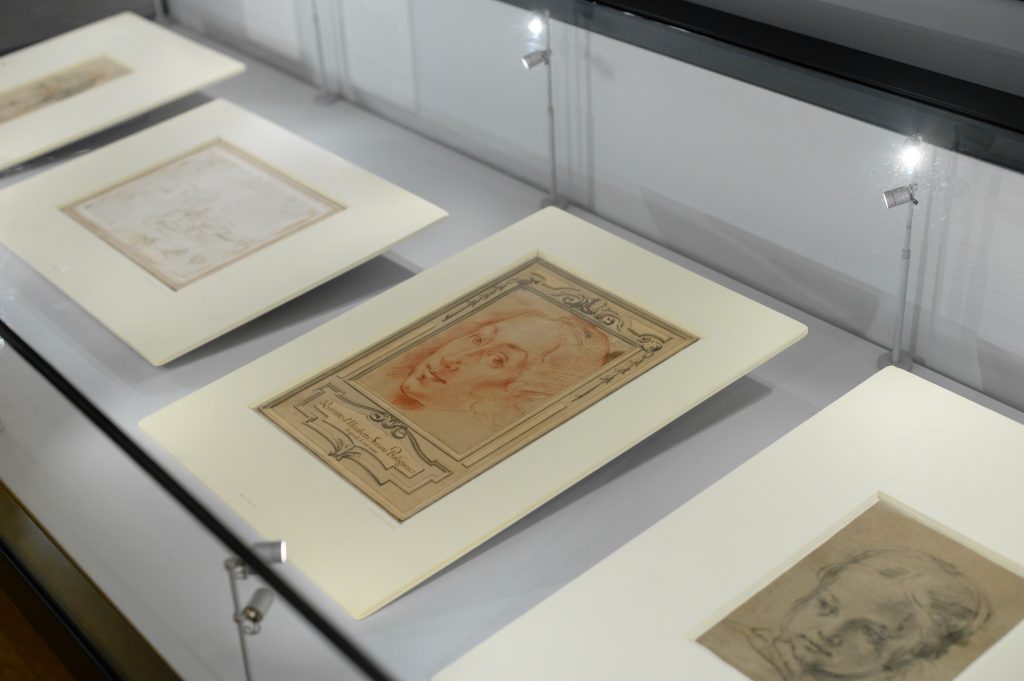
(Photo Credit: Pete Carr)
The first painting facing visitors as they enter the next room is “Allegory of Painting and Music” (between 1640-1670) by her father, Giovanni Andrea Sirani. This is a new acquisition in which it’s thought Elisabetta could feature, as O’Donoghue explains: “This painting shows two women engaged in the arts, one in the act of painting and the other reading sheet music. It’s known that Sirani’s daughters did sometimes model for him and although we don’t know for sure if they sat for this painting, there is that possibility and so there’s an opportunity for further research”.
The redevelopment of these rooms has been a major undertaking for the Walker with intense behind the scenes activity. It took months just to take down all the works and decide where they needed to go – whether straight into storage, or for cleaning and/or conservation. Some of the paintings had never been off the walls, so their removal gave the Gallery’s in-house experts an opportunity to examine and study the works. New technology since they were first hung, such as infrared cameras and microscopy, revealed details and under-drawings that in some cases they hadn’t known about.
David Crombie, Senior Paintings Conservator, outlines the work they carried out: “Twenty paintings received some form of surface treatment to improve the visual condition, often comprising significant adjustments to old and discoloured re-touchings. Eleven of these were fully cleaned and conserved for the new gallery displays”.
Their expertise also extended to the frames, many of which were re-gilded and fitted with laminated low reflective glass, which makes the paintings more visible and accessible under the new lighting. An entire reproduction frame had to be commissioned to replace a very damaged original – that of “The Raising of Lazarus” (1730-35) by Antonio Balestra, a painting which was also fully cleaned.
A triptych, “The Crucifixion Altarpiece”, made around 1460-1490 in Germany of carved, painted lime wood, is exhibited for the first time in nearly 50 years, following cleaning and conservation to stabilise it ready for display. None of the jewellery was previously on permanent display. A gold engraved ring, believed to have belonged to Richard Neville (1428-1471) the 16th Earl of Warwick, known as ‘the Kingmaker’, was last exhibited 20 years ago.
In line with today’s ethos of “full disclosure” expected of public galleries and museums, the first room has an unequivocal explanation of the Collection’s direct links to the transatlantic slave trade. O’Donoghue says it was vital to include this: “It is part of the story of the Walker, indeed the story of Liverpool more broadly. With these new galleries we felt it was really important to acknowledge the histories that were previously not represented in these spaces. At the same time we want people to come and enjoy these collections. But it’s just as important that we are really transparent about the origins of the works”.
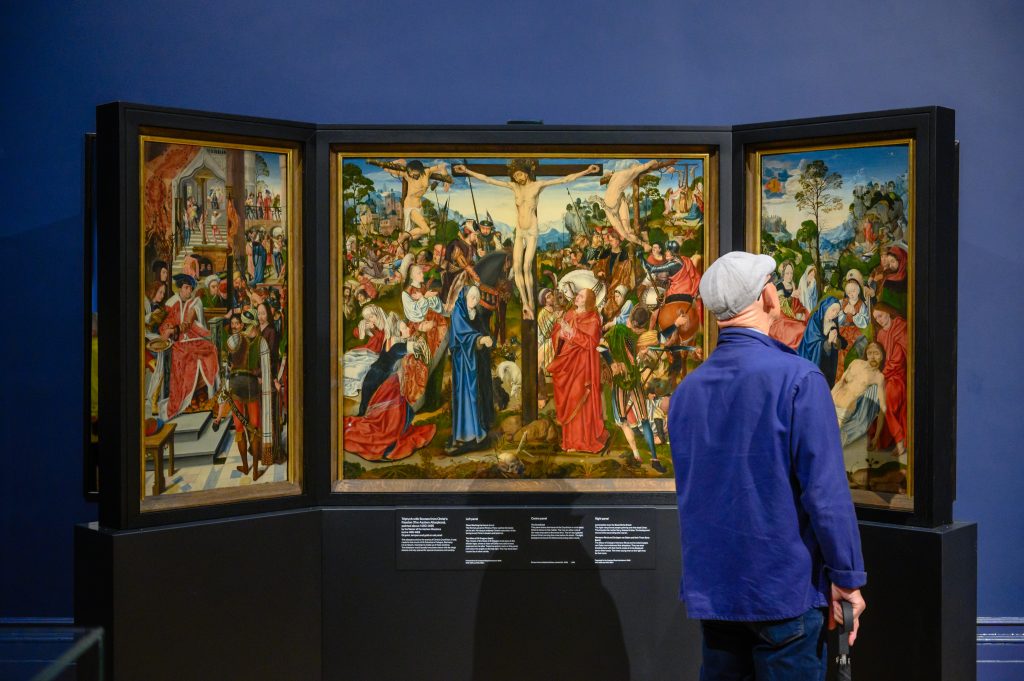
(Photo Credit: Pete Carr)
One of the earliest paintings being shown is “Christ Discovered in the Temple” by Simone Martini, among the greatest artists of 14th century Italy. For O’Donoghue, it illustrates how something ancient can still be relevant to today’s viewers: “Unusually, the family group shows Jesus as a 12 year old. It is after he has wandered away from his parents, so he’s been missing and he’s found three days later. In the meantime his parents have been worried sick and they ask him where’ve you been and he says he’s been about doing his heavenly father’s business”.
I’m not sure that would cut much ice with parents these days! But as O’Donoghue goes on to say, it’s the body language that’s familiar: “What’s really interesting in the painting is that his arms are folded, he’s got quite a moody expression, and its kind of like that stroppy 12-year-old’s response that we see today. It’s one of the lovely things about these galleries – that the objects might be centuries old but there are actually universal themes and relatable moments and this is a really lovely example of that”.
Although the new galleries are mainly chronological the curators have also included some thematic groupings, which they hope will act as a way in to the collection. In the portraiture section you can see works together that span the 15th to 17thcenturies – a kind of snapshot of the celebrity culture of the periods. The huge, full-length portrait of Henry VIII (circa 1350) derived from the workshop of Holbein, is one of the most famous images in the collection and he’s powerfully present in this room.
Nearby is another large, impactful portrait, recently upgraded to being fully by the hand of Anthony van Dyck, one of the most prominent artists of the 17th century. It depicts Spanish princess, Infanta Isabella Clara Eugenia (circa 1628-1633) and was upgraded following input from specialists and scholars across the world. Her sideways gaze makes it an unnerving portrait, with many viewers describing the painting as one where her eyes follow you as you walk around the room.
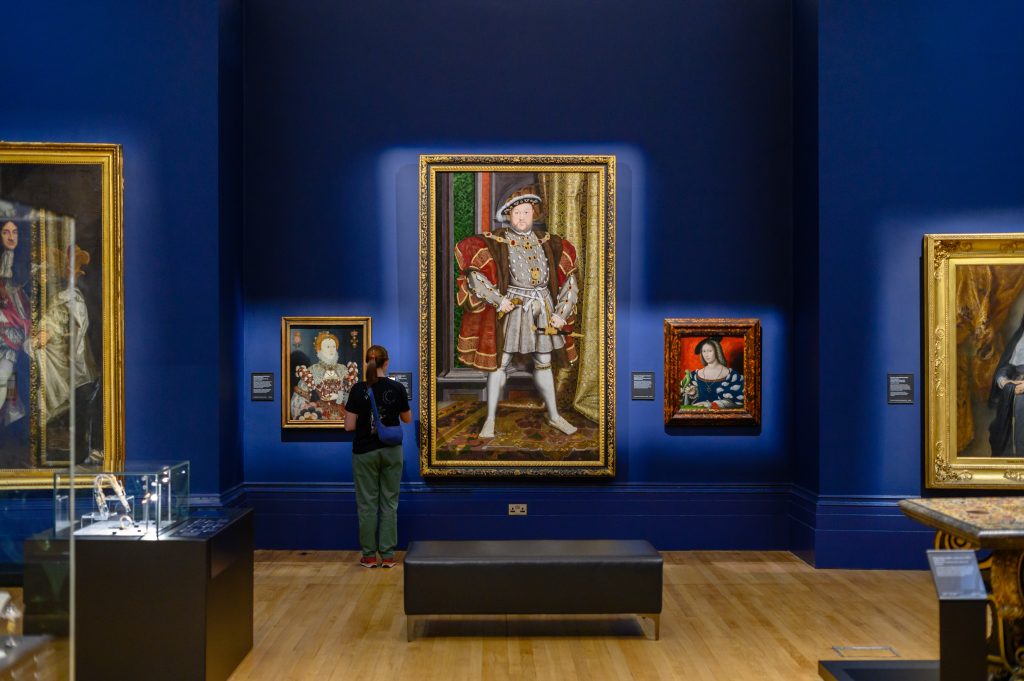
(Photo Credit: Pete Carr)
Another highlight of the collection is the Rembrandt self-portrait (between 1630-1633). At least 80 self-portraits have been attributed to him and this is one of his earliest, painted when he was about 24. It is thought to be one of the first to enter England – destined for the court of Charles I, who was an avid art collector.
To my eye, the Gallery’s in-house creative team has pulled off something of a magic trick with the new wall colours. They have managed to unite the historic artworks with a contemporary décor that allows the displays – and the visitors – to breathe. The huge 16th century tapestry, “The Triumph of Fortitude”, for example, has been returned to its original place but now looks brighter against the painted, deep blue-green wall than it did against the red flock wallpaper.
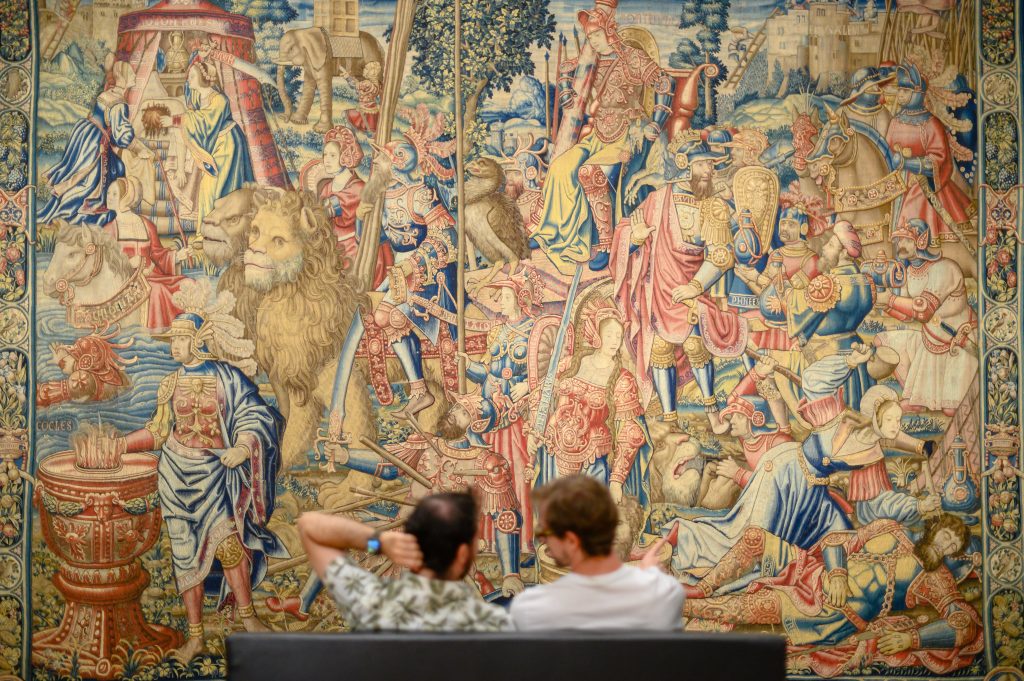
(Photo Credit: Pete Carr)
The Walker has, I’m pleased to say, resisted the temptation to include endless touch-screens, prevalent in so many public galleries and museums. There are a few but they are discreet and informative, such as the one in the drawings and prints room.
The curatorial team has also been restrained in the word count for wall texts, limiting the labels to something like the original Twitter (do we really have to call it “X”?!) length of around 50-75 words. As O’Donoghue says, they want to encourage viewers to spend more time looking at the art: “Our aim is to find a balance between sharing fascinating insights, prompting thought, but also not overwhelming the reader”.
At the end of my visit, O’Donoghue reflects on the significance of the new galleries: “The opening of these rooms isn’t the end of a project. It is actually the beginning of, hopefully, an exciting new chapter for the Walker. It gives us an opportunity to look into this collection more, there are lots of new discoveries still to be made, lots of research we can do into the collection”.
***
You can follow Walker Art Gallery on instagram here and visit them at the address below.
Walker Art Gallery,
William Brown Street,
Liverpool, L3 8EL
Free entry
Open daily 10am-5pm
Visitors will soon be able to sign up for a curatorial talk about the new galleries. Tickets for these cost £7.00 and will be listed as part of the “Beyond the Label” series given by National Museums of Liverpool.
The Walker’s website provides more information and videos about such topics as how the collection is cared for and the decolonising of the collection, which you can view here and here. Some of the works in the new rooms are still being listed as currently not on display. The Gallery is working to update the site.
Filed under: Art & Photography
Tagged with: artefacts, Baroque, Culture, exhibition, history, interview, liverpool, Mediaeval, medieval, open, paintings, Renaissance, slave trade, visit, Walker Art Gallery


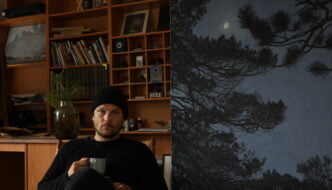
Comments